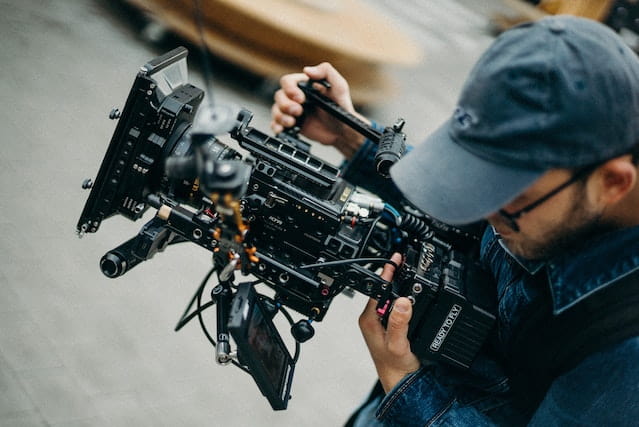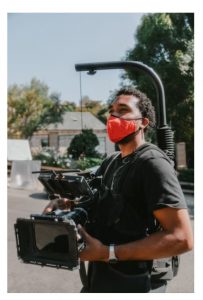
Towing isn’t just about moving broken-down cars from one place to another. It’s a service that keeps cities running, supports countless drivers, and, surprisingly, is integral to the world of films and cinematography. In San Jose, the heart of Silicon Valley, towing services play a crucial role, especially in film production. Whether it’s creating realistic car chases or rescuing vehicles stuck on set, towing companies are often unsung heroes of the industry.
Towing San Jose: Keeping the Set Running
Film production in San Jose requires meticulous planning, especially regarding action scenes involving vehicles. That’s where local towing services come in. They’re tasked with moving cars that break down and carefully positioning them for cinematic scenes. In many cases, Towing San Jose services help filmmakers transport vehicles to filming locations, whether it’s an old muscle car for a period piece or a high-tech electric vehicle for a futuristic thriller.
Towing companies in the city also collaborate with production crews, ensuring that safety remains a top priority on set. Car stunts, crashes, and vehicle damage—everything can be controlled with the right towing experts on hand.
How Towing Services Enhance Cinematic Realism
Have you ever watched a car chase scene in a movie and thought about how they got it just right? Behind the scenes, there are always towing professionals ensuring the vehicles are placed precisely where they need to be. These experts use their skills to support seamless transitions between action sequences and help create the illusion of cars speeding through city streets or breaking down in a dramatic moment.
In some cases, directors rely on towing companies to stage crashes safely. Instead of risking an actor’s safety or damaging expensive vehicles, towing professionals use rigs to pull or position cars to make the stunt look real without the danger.
Common Roles of Towing in Film:
- Car positioning: Ensuring vehicles are in the right place at the right time for specific shots.
- Stunt assistance: Helping with vehicle stunts, including pulling cars at precise speeds for dramatic crashes.
- Emergency towing: Removing broken down or damaged vehicles from the set so filming can continue immediately.
- Controlled crashes: Using towing equipment to simulate collisions without risking injury or major damage.
Why Filmmakers Trust Local Towing Experts
In an industry where time is money, dependable towing services are essential. Delays due to vehicle issues can disrupt filming schedules, increase costs, and cause stress for production crews. San Jose’s towing services understand these challenges. That’s why many towing companies in the area offer specialized services catered to film productions.
Not only do they bring expertise in handling vehicles, but they also provide timely and reliable solutions for unexpected problems. Whether it’s a stunt vehicle that needs a quick fix or a regular car that won’t start, the professionals are on hand to ensure that the show can go on.
The Hidden Relationship Between Towing and Movie Magic
Towing services have played a vital part in many Hollywood blockbusters. From supporting epic car chases to creating realistic breakdowns, these professionals are vital to making movies look authentic. Without towing experts, many of the thrilling vehicle scenes we see on the big screen wouldn’t be possible.
But it’s not just action films that need towing services. Productions of all genres can benefit from the support of local companies. Whether it’s a documentary that needs vintage cars transported to a location or a romance film requiring a vintage truck, towing professionals always work in the background to make movie magic happen.
The Future of Towing and Films in San Jose
As the demand for film productions continues to grow in Silicon Valley, the role of Towing San Jose will likely expand as well. With technological advancements and electric vehicles becoming more common in films, towing services must adapt to new challenges. Companies that can handle the latest vehicle technology while providing top-notch services to film sets will be in even higher demand.
Towing experts might also see a shift towards more involvement in eco-friendly productions. With the push for sustainability, film sets may look to reduce their carbon footprint by relying on electric tow trucks or partnering with green-conscious towing companies.
READ ALSO: How Cinematography and Relocation Services Enhance Each Other
Conclusion
Towing services in San Jose are more than just roadside assistance for broken-down cars. They are vital players in the world of films and cinematography, often behind the scenes, making sure vehicles are in the right place at the right time. Whether it’s helping stage a crash or ensuring a car chase runs smoothly, towing professionals play a critical role in bringing movies to life.
The next time you watch an epic car chase or an intense crash scene, remember that behind the camera, there’s likely a towing crew making it all possible. In San Jose, these services are essential not only for the day-to-day running of the city but also for adding that extra touch of realism to the movies we all love.



 Are you looking to increase your social media following? Have you considered tik tok follower kaufen and incorporating film and cinematography into your content strategy? Whether you’re a filmmaker or simply a fan of movies, integrating these topics into your social media presence can help attract new followers and engage your current audience. In this article, we’ll explore how you can use film and cinematography to optimize your social media content and gain more followers.
Are you looking to increase your social media following? Have you considered tik tok follower kaufen and incorporating film and cinematography into your content strategy? Whether you’re a filmmaker or simply a fan of movies, integrating these topics into your social media presence can help attract new followers and engage your current audience. In this article, we’ll explore how you can use film and cinematography to optimize your social media content and gain more followers.


